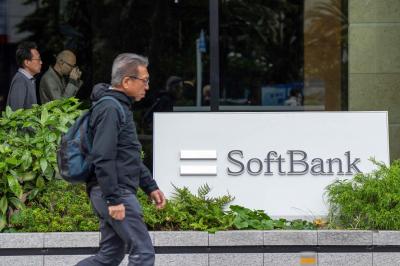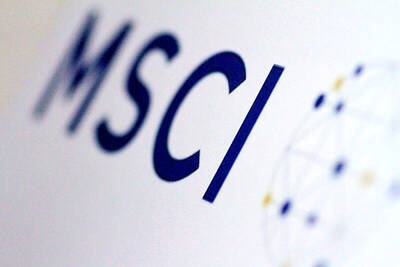Taiwan's Quanta Computer Inc (廣達電腦) has been chosen as the original design manufacturer (ODM) for the ambitious US$100 laptop project called "One Laptop per Child (OLPC)," according to a news release posted on the Web site of the Delaware-based, non-profit organization under the Massachusetts Institute of Technology's (MIT) Media Lab.
The decision was made yesterday after the OLPC's board of directors reviewed bids from several possible manufacturing companies, the statement read. The local media had earlier reported that the organization negotiated with Quanta, Compal Computer Inc (
The initiative to develop a US$100 laptop in a bid to revolutionize global education for children was first announced by Nicholas Negroponte, Media Lab chairman and co-founder, at the World Economic Forum in Davos, Switzerland, in January.
"Any previous doubt that a very-low-cost laptop could be made for education in the developing world has just gone away," Negroponte said in the statement.
Quanta has already signed the contract with the US organization, company spokesman Tim Li (
However, since the whole project is still in the initial stage with a few technological issues that have to be resolved, such as model specifications, it is difficult to predict the exact time and quantity for mass production, Li said.
But OLPC said in the statement that Quanta has agreed to devote a significant part of Quanta Research Institute's engineering resources in the first half of next year, with a target of bringing the product to market in the fourth quarter of next year, the statement said.
Li said Quanta can benefit from the project by reinventing cost-saving production through the sharing of research and development resources with other leading global companies such as central processing unit maker Advanced Micro Devices Inc and other panel makers, which will ultimately be advantageous to their clients.
The project would not be a money-losing business that could impact the company's margin and profitability, as Quanta is a profitable organization and knows its responsibility to its shareholders, he added.
According to OLPC, the 5 million to 15 million laptops will be launched in seven culturally diverse countries, namely, China, India, Brazil, Argentina, Egypt, Nigeria and Thailand.
The organization will allocate one million units in each of these countries, with an additional modest allocation of machines to seed developer communities in a number of other selected countries. A commercial version of the machine will be explored in parallel, it said in the statement.
The laptops will be sold to governments and issued to children by schools on the basis of one laptop per child. These machines will be rugged, Linux-based, and so energy-efficient that hand-cranking alone can generate sufficient power for operation, it said.

PERSISTENT RUMORS: Nvidia’s CEO said the firm is not in talks to sell AI chips to China, but he would welcome a change in US policy barring the activity Nvidia Corp CEO Jensen Huang (黃仁勳) said his company is not in discussions to sell its Blackwell artificial intelligence (AI) chips to Chinese firms, waving off speculation it is trying to engineer a return to the world’s largest semiconductor market. Huang, who arrived in Taiwan yesterday ahead of meetings with longtime partner Taiwan Semiconductor Manufacturing Co (TSMC, 台積電), took the opportunity to clarify recent comments about the US-China AI race. The Nvidia head caused a stir in an interview this week with the Financial Times, in which he was quoted as saying “China will win” the AI race. Huang yesterday said

Nissan Motor Co has agreed to sell its global headquarters in Yokohama for ¥97 billion (US$630 million) to a group sponsored by Taiwanese autoparts maker Minth Group (敏實集團), as the struggling automaker seeks to shore up its financial position. The acquisition is led by a special purchase company managed by KJR Management Ltd, a Japanese real-estate unit of private equity giant KKR & Co, people familiar with the matter said. KJR said it would act as asset manager together with Mizuho Real Estate Management Co. Nissan is undergoing a broad cost-cutting campaign by eliminating jobs and shuttering plants as it grapples

Japanese technology giant Softbank Group Corp said Tuesday it has sold its stake in Nvidia Corp, raising US$5.8 billion to pour into other investments. It also reported its profit nearly tripled in the first half of this fiscal year from a year earlier. Tokyo-based Softbank said it sold the stake in Silicon Vally-based Nvidia last month, a move that reflects its shift in focus to OpenAI, owner of the artificial intelligence (AI) chatbot ChatGPT. Softbank reported its profit in the April-to-September period soared to about 2.5 trillion yen (about US$13 billion). Its sales for the six month period rose 7.7 percent year-on-year

MORE WEIGHT: The national weighting was raised in one index while holding steady in two others, while several companies rose or fell in prominence MSCI Inc, a global index provider, has raised Taiwan’s weighting in one of its major indices and left the country’s weighting unchanged in two other indices after a regular index review. In a statement released on Thursday, MSCI said it has upgraded Taiwan’s weighting in the MSCI All-Country World Index by 0.02 percentage points to 2.25 percent, while maintaining the weighting in the MSCI Emerging Markets Index, the most closely watched by foreign institutional investors, at 20.46 percent. Additionally, the index provider has left Taiwan’s weighting in the MSCI All-Country Asia ex-Japan Index unchanged at 23.15 percent. The latest index adjustments are to